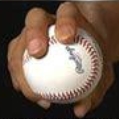Eastern Conference
Atlantic Division
Central Division
Southeast Division
Western Conference
Northwest Division
Southwest Division
AFC
NFC
American League
National League
Baseball Pitches and What They Look Like

In 2023 the Pittsburgh Pirates had the first overall pick in Major League Baseball’s amateur draft and with it they selected Louisiana State University’s Paul Skenes. This season Skenes is wowing the National League with his fastball, control, and a special pitch he developed call the “splinker.” It’s a combination of a splitter and sinker and it’s nearly unhittable.
With that said, some baseball fans will be familiar with a fastball, sinker, splitter, changeup, and curveball. However, with the addition of Skenes’ splinker there are many more types of pitches professional’s throw. This is a review of all the several types of pitches and background on them.
Curveball
One of the most popular pitches is one that almost every pitcher probably has in his arsenal. The curve is said to have more movement on it than any other type of pitch. While remarkably similar to the slider, the intention of the curve is to keep a batter off balance at the plate. Most catchers will signal for the curveball with two fingers pointing down. For those unaware the combination of a pitcher and catcher is referred to as “battery mates.” Below is the typical grip of a curveball.
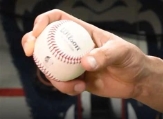
Changeup
A changeup follows the same path as a fastball pitch however it is thrown much slower. The key to the changeup is to project it as a fastball believing the batter will think that is what he is getting but with the ball coming in slower would be fooled. Considered an off-speed pitch, when thrown correctly, the best result would be a batter swinging at the ball too early. If the hitter does make contact and his timing is off, most of the time it results in a very weakly hit ball. But, if the batter times it right, he can get particularly good contact with the ball given its slow speed. The grip of a changeup is as follows:

Cutter
The cutter pitch does not refer to a player scuffing up the ball for movement effectiveness. Instead, it is a version of a fastball, but the intent is to throw the ball so that by the time it reaches home plate it is on the pitcher’s glove side. When thrown correctly, the ball will “cut” away when it is thrown at a right-handed hitting batter or cut in to a left-handed hitter. This type of pitch is one of the lesser common pitches. If you see a batter break his bat it might be because he just swung at a cutter which can and has resulted in a hitter having to get a replacement bat if he doesn’t make an out on the pitch. The reason for this is because the ball in these instances will hit the handle of the bat causing breakage.

Eephus pitch
One of the rarest and most unusual pitchers in one that is credited for creation to former major leaguer Truett Banks "Rip" Sewell who played for the Detroit Tigers in 1932 and then the remainder of his career with the Pittsburgh Pirates from 1938-1949. The name of the pitch came from teammate Maurice Van Robays when asked about the strange delivery and the pitch responded with, “eephus ain’t nothing, and that’a nothing pitch.” If you look up the word “efes” in Hebrew, it can mean “nothing.” If you’ve never seen the pitch, Google it. You might think it’s more of a joke but when thrown corectly it can be effective. The pitch is thrown at a very high arc so that it drop down into the strike zone for a strike and being that it is very hard to judge, batters would often swing and make a big whiff on the pitch.
One very famous player that wasn’t fooled by the pitch was the great Ted Williams who faced Sewell and the pitch in the 1946 All-Star game and subsequently smashed it for a home run. Video of the incident is below.
Here’s the infamous grip:
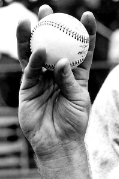
Forkball
Drop your knives and spoons and grab a fork. Not literally of course. One of the hardest pitches to throw, which makes it a rare pitch is the forkball. It got its origin from the splitter and created a huge downward break to the plate. Throwing a forkball requires snapping of the ball on release which can cause injury thus not used often. As you will see in the grip below, a forkball is set up by placing the ball between his index and middle fingers which obviously could be quite uncomfortable. By giving the ball, a downward snap of the wrist, the result will be an extreme downward movement of the ball. The forkball can resemble the splitter.
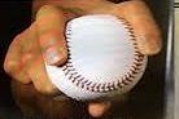
Four-Seam Fastball
The fastball is one of the most effective pitches especially for a hard throwing pitcher like Nolan Ryan used to be and Paul Skenes is utilizing it getting the ball to the plate in excess of 100 miles-per-hour most of the time. This pitch might be called at times a “rising fastball” as it said it can defy gravity for a time longer than any other pitcher gives a hitter the impression the ball is rising. The average speed of the ball in Major League Baseball is said to be about 94 mph these days. The way to grip this pitch with the horseshoe stitching in a horizontal position with two fingers placed across the open space between the seams and the edges of each finger slightly over the seam. Proper placement has the fingers contacting the seams at four points and both fingers in contact with each side of the horseshoe. When thrown correctly the ball will have a backspin and travel directly through the strike zone.
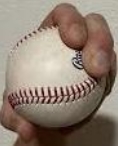
Knuckleball
When I was a kid playing pickup baseball, this was one of my favorite pitches when I was throwing the ball. I liked it because when thrown properly the ball would not spin at all. It was so odd but difficult to throw. The pros who throw it know there is no spin, and the ball will “flutter” in its travel to home plate. Most catchers do not like the pitch because of its crazy movement, and it becomes to tough for umpires to determine if it is in fact in the strike zone. The problem for knuckleballers is that the speed is exceptionally low thus if contact is made, a batter will get full contact on the ball. Charlie Hough and Hoy Wilhelm might be the two most famous knuckleballers.
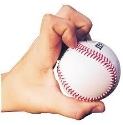
Knuckle-Curve
The cousin of a knuckleball is the knuckle-curve. This pitch gets its name from the grip used to throw it. It’s an offshoot of a curve ball but with one knuckle raised off the ball. The ball’s flight will resemble that of a curve, but the trajectory is mostly up and down but will at times also show a horizontal break. The beauty of the pitch is that while it provides the typical curveball break, it will also show a knuckleball feature the flutter.
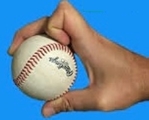
Screwball
When I was a kid growing up in Pittsburgh and following the Pittsburgh Pirates, the Bucs had a relief pitcher named Ramon Hernandez who had the screwball in his arsenal. I clearly remember watching him pitching and when he threw the screw, the ball had some funky movement. Hall of Fame pitcher Carl Hubbell resurrected his career with the pitch and that was a long time ago. To throw this pitch requires a player to snap his wrist so that when done correctly his palm would face away from the glove side. The result is the opposite of a curve ball breaking in the opposite direction.
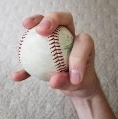
Sinker
This pitch is often referred to as a “two-seam fastball.” When thrown properly the ball will show a hard downward movement, or good arm-side movement and sometimes both. A common result is a ground ball, so thrown perhaps when a double play is warranted. The speed of this pitch would be second to the four-seam fastball. The sinker makes it more difficult for a batter to hit a homerun off it.

Slider
The slider pitch might have the best breaking ability of all pitches. The movement of the ball is less than other pitches, but the break is dramatic. A slider has move velocity on it that does a curveball, but it is deceptive and hard to hit. Credit for its origin is reportedly belonging to another Hall of Fame pitcher, Charles “Chief” Bender.

Splitter
This pitch is called by some the “split-finger fastball.” But it doesn’t carry the speed of a fastball and is considered an off-speed pitch. The significance of the splitter is that when it nears home plate it will suddenly drop sharply. In Japanese pro baseball this is one of the more popular pitches. The forkball was the inspiration for the splitter and Hall of Fame relief pitcher Bruce Sutter put it to effective use.
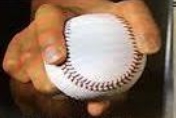
Sweeper
This pitch is a new one for me as I’ve never heard of it until researching this article. Apparently, it gets its formation based on the slider and for those who throw it they will see much horizontal movement of the ball unlike its sister pitch the slider that breaks harder. It is thrown slower than a slider but from research, sliders thrown in the MLB will break about six inches horizontally whereas the sweeper results in a 15” break. As a new pitch, one player that throws it is Yu Darvish. The sweeper was added to the company Statcast’s inventory just last year.
